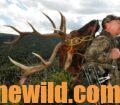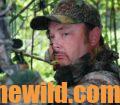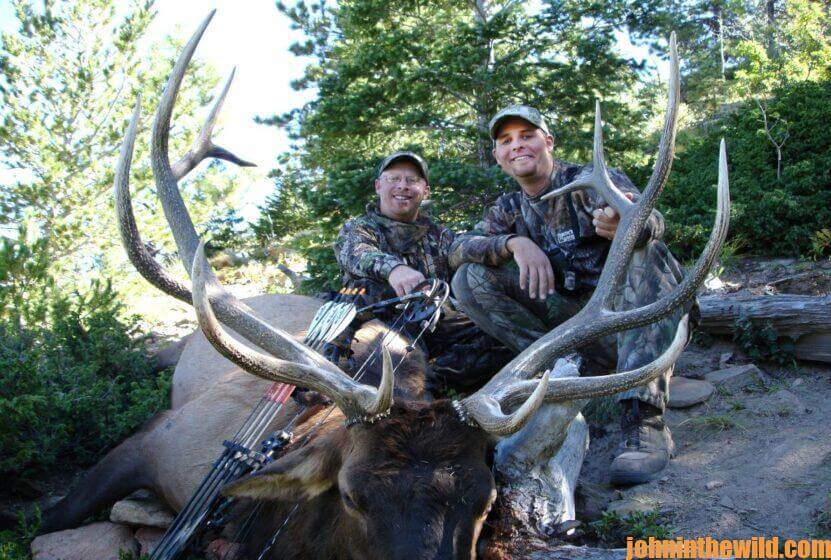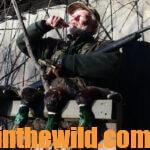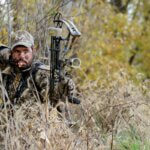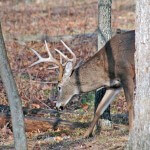Editor’s Note: Nationally-known hunter Phillip Vanderpool of Harrison, Arkansas, went on an elk hunt in Raton, New Mexico, with professional elk hunter and caller Wayne Carlton (https://www.nativebycarlton.com/) and videographer Jimmy Estes. On the first afternoon of the elk hunt, two elk came to within 15 to 30 yards, but Carlton didn’t get a shot. The next morning, Estes went with another hunter, while Vanderpool and Carlton returned to the same area where they had encountered the big bulls the first day.
 Although this was the second day of our hunt, it was our first morning hunt. We were hunting the early season. (This year elk season started in some western states in August). Wayne is a soft-spoken, non-aggressive hunter who relies more on his patience than his speed to take an elk. On the other hand, I’m a get-up-and-go, let’s run-to-get-into-place-to-call-the-elk type of hunter. When we reached the spot where we planned to start hunting, we heard several bulls bugling. Although the bulls no longer were in their bachelor groups, they still were staying close together. Four to five elk were bugling in this one bowl (a natural formation shaped like a bowl).
Although this was the second day of our hunt, it was our first morning hunt. We were hunting the early season. (This year elk season started in some western states in August). Wayne is a soft-spoken, non-aggressive hunter who relies more on his patience than his speed to take an elk. On the other hand, I’m a get-up-and-go, let’s run-to-get-into-place-to-call-the-elk type of hunter. When we reached the spot where we planned to start hunting, we heard several bulls bugling. Although the bulls no longer were in their bachelor groups, they still were staying close together. Four to five elk were bugling in this one bowl (a natural formation shaped like a bowl).
Rather than hurrying to get close to a bull, Wayne whispered, “We’ll move really slowly and stay high on these ridges, because that’s where the elk are coming. We’ll have an updraft of wind that will remain constant throughout the morning.” I was really surprised that Wayne moved so slowly and cautiously. He used every elk call he could. He was like a professional bass fisherman on the practice day of a big tournament, who threw just about every lure in his tackle box until he determined which lure or lures the bass wanted to bite.
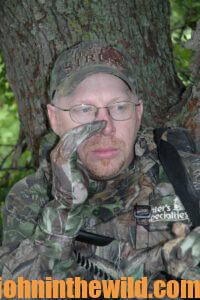
I’d never seen another elk hunter use as many-different elk calls as Wayne did and constantly change from one call to another. We heard a big growler bull, and we took our time, spending about 2 hours getting close to him. I’ve learned that bull elk seem to have a bubble around them consisting of the distance a bull will travel to try to pick-up a cow he hears calling or to challenge another bull. If you can get inside that bubble, your chances are 100% better for calling that bull to you. So, after 2 hours of calling and slowly walking, we got within that bubble of the growler bull. The big bull came to within 30 yards of us when Wayne started to draw his bow. The bull spotted the movement but didn’t know what it was. When Wayne’s elk hunting, he’s always got an elk call in his mouth or hands, and when he thinks a bull’s coming, he’ll keep a diaphragm elk call in his mouth. So, when Wayne recognized that the bull had seen him move, he didn’t panic. Instead, he continued to blow his diaphragm cow call to settle-down the bull and make the bull wonder if he’d seen a cow elk or something else.

After Wayne settled-down the bull by cow calling, the bull started staring at me. I was leaning-up against a tree when that bull locked his eyes on me for a good 2 minutes, which seemed like an eternity in this type of pressure situation. Finally, the bull started to turn and walk back along the same trail he’d followed to get to us. When Wayne tried to draw, the bull heard him and started walking faster. As soon as Wayne noticed what happened, he began cow calling. The bull circled back around to the right and started coming back toward us. When the bull was between 35 to 40 yards from us, Wayne released his arrow. The bull went about 40 yards after taking the arrow. This 6×6 bull had over 10 to 11-inch bases on his antlers and split tines on both his G-1 points. He was an older bull and would score about 300 inches on Boone & Crockett (https://www.boone-crockett.org/). This huge bull weighed about 850 pounds.

There were five-different bulls in the bowl where we hunted, and this bulled seemed to be the dominant one. We had three big bull encounters on an afternoon and a morning hunt, and Wayne called the bull he took with his bow to his stand twice. When the elk started to walk-off, Wayne called him to within bow range. I learned from Wayne that one of the most-effective ways to get a bull to within bow range was to use multiple calls, get inside the bull’s bubble, be patient and not panic if you didn’t get a shot or the bull turned to leave. This was a great hunt and a tremendous learning opportunity for me.
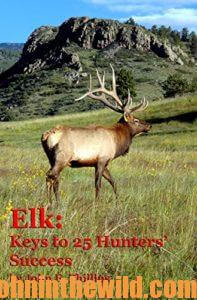
To learn more about hunting elk successfully, check out John E. Phillips’ book, “Elk: Keys to 25 Hunters’ Success,” available in Kindle, print and Audible versions at https://amzn.to/2IDszQk. You may have to copy and paste this click into your browser. When you click on this book, notice on the left where Amazon allows you to read and hear 10% of the book for free. On the right side of the page and below the offer for a free Audible trial, you can click on Buy the Audible with one click.
Tomorrow: Hunt New Mexico’s Bull Elk

